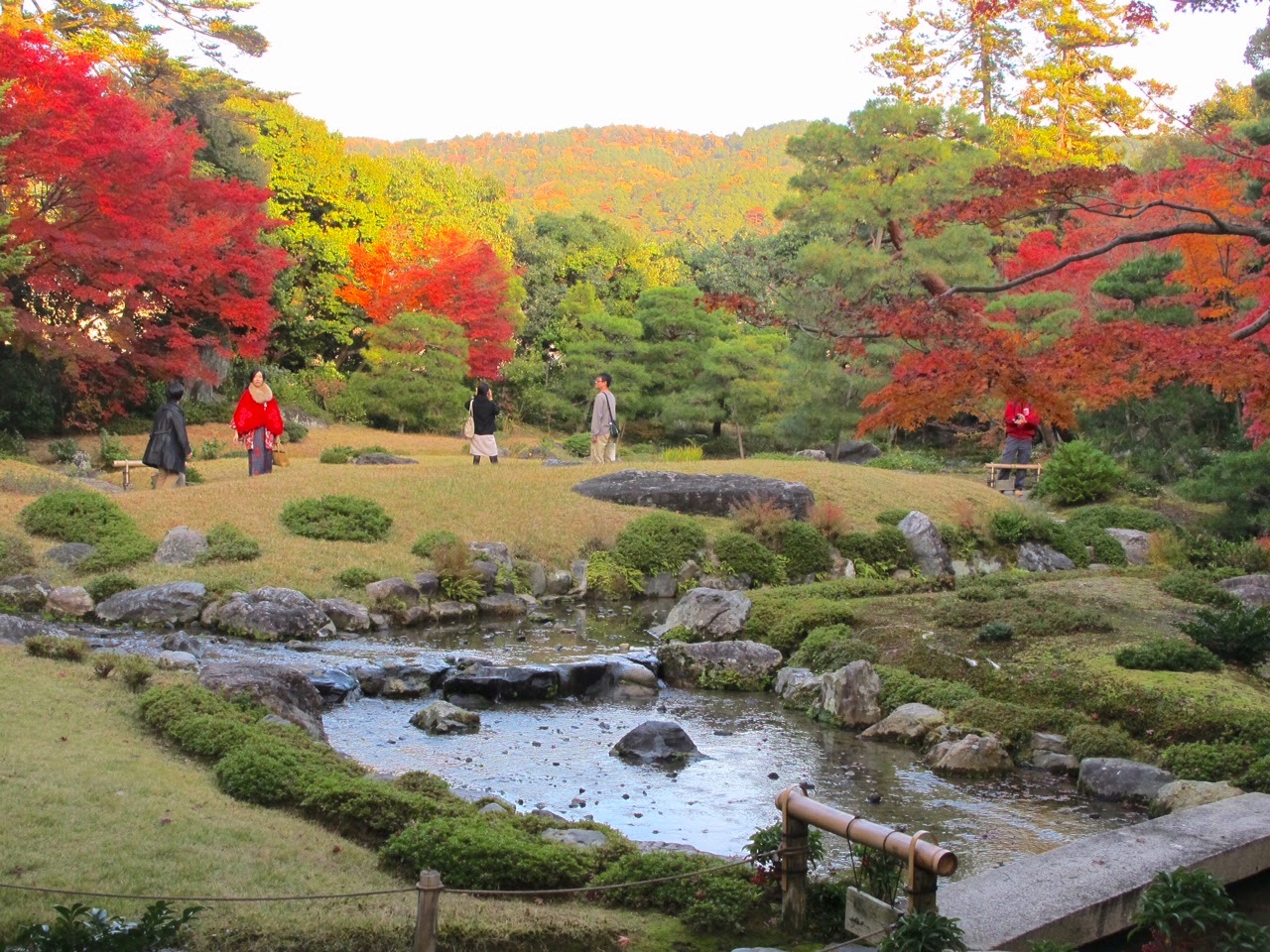 |
| 11/25/14: Planning coffee near train station at Kurama |
From Peggy:
11/23: Today, the entire group, minus Cara & Kim who are now on to Tokyo, took a train ride up into the mountains to Kurama. Later, Steve & I went to Murin-an and then to Shoren-in Temple that was lit for night. Again, long lines to get in at Shoren-in, but the people keep moving and if you are patient, you get to see everything.
11/24:
Everyone went different ways today. Dewey & some went to Lake Biwa. Steve & I went to Ryoan-ji, Kinkaku-Ji (Golden Pavilion) & Kyoto Botanic Garden.
We all met for a final dinner together, but forgot to take any pictures. We we having too much fun together.
Peggy
 |
| Nov. 2014 - Kurama: on the mountain trail |
Kurama-dera (鞍馬寺?) is a temple in the far north of Kyoto, Japan which houses some National Treasures of Japan. It was a member of the Tendai sect and subordinate to Shōren-in from the 12th century until 1949 when it founded its own religious body. The object of worship is esoteric and unique to the temple. It is said to have been founded by a disciple of Jianzhen.
Situated in secluded wilderness at the base of Mount Kurama, it is accessible by its own cable car line, the Kurama-dera Cable. [...] It is an extremely popular temple for Japanese people to visit, owing to the many mysteries and occult events surrounding it, but does not appear in most English language guidebooks. [...] More here....
 |
| Nov. 2014 - Murin-an, historic residence: garden |
Murin-an (無鄰菴?) is a Japanese garden in Kyoto, built by political and military leader Yamagata Aritomo between 1894 and 1898. It is an example of a classical Japanese promenade garden of the Meiji Period. [...]
Yamigata Aritomo was an important figure in the politics and military affairs of the Meiji Period. Born into an old Samurai family and devoted to military affairs, he traveled to Europe in 1869 as part of a delegation of experts to study the Prussian Army, and when he returned he helped re-organize the Japanese Army on the Prussian model. He became Minister of War in 1873, and was twice Prime Minister of Japan, from 1889 to 1891 and from 1898 to 1900. [...] More here...
 |
| Nov. 2014 - Murin-an, historic residence: entrance |
Our field-trippers are starting to come home this week, on different flights, different days and ways. Have all safe trip home!
Here is a fitting Kobayashi Issa haiku from 1816 for your trip:
.ぼつぼつと猫迄帰る夜寒哉
botsu-botsu to neko made kaeru yozamu kana
one by one
even the cats come home...
cold nights







































